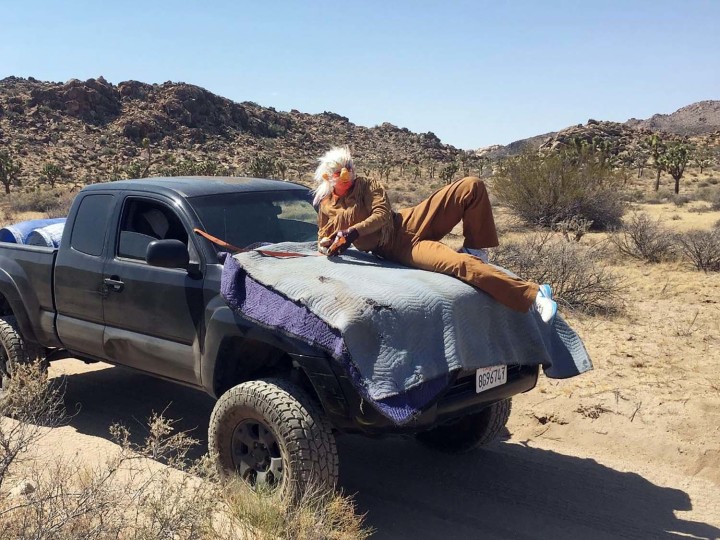Tori Wrånes’s survey exhibition presents evidence that the Norwegian artist’s outlandish dreamscapes were once real — their remnants are on view in the National Museum of Norway, placed amid classically detailed sconces and grand marble arches.
There is Rickshaw Ballet (2015), a harmonious collision of Bangladeshi rickshaw drivers transporting local singers in a chaotic chorus-in-motion; TRACK OF HORNS (2015), in which the ascending cars of a ski lift carry a line of singing, aged trolls high up into the Italian Alps; and an aerial recital in The opposite is also true 2 (2011), in which both the artist and a piano are suspended perpendicularly from a wall, playing a descending scale while singing an ascending one.
The survey also includes the debut of a new performance, Sirkling. Inverting the theater’s traditional relationship of spectacle and audience, guests are invited to take a seat on a structure resembling a seven-layer wedding cake frosted in industrial carpeting, situated in the center of the exhibition. Changes are so finely calibrated as to make one doubt any information delivered by one’s own senses: the rafters spin so slowly that the movement is nearly undetectable; the lights dim so subtly that the performers prancing in furry costumes — a species of fluffy white troll that often finds solace in Wrånes’s world, as in her previous work Shapeshifters (2014) — seem to have been there the entire time. Frolicking, pausing, hiding, catching up to each other, the band of trolls circumambulate the audience, while a menacing score of wobbling metal and softly harmonizing creatures fills the hall. Once the circling ends, viewers exit the scene, only to encounter a startling chorus of these wondrous creatures filling the museum’s foyer.
The artist is an advocate for the figure of the troll, who is feared or maligned for characteristics shared by all — aspects that only come to light once we are alone. While many of her daredevil performances operate on a theatrical scale, her many sculptures of purposeful misalignment and repetitive limbs and appendages — Mom, don’t you miss the real me? (2015), The Singer (2015) — embody this suspicion of our wild sides most accurately: they have evolved to thrive in a future we have yet to imagine.


